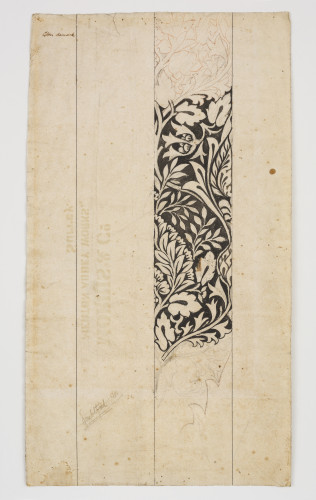‘Swivel’ was one of William Morris’ first designs intended specifically for woven fabric. This fabric was initially produced by textile contractors employed by Morris & Co., as weaving required a level of skill and equipment not yet available to the firm prior to the establishment of the Merton Abbey textile workshop, though Morris & Co. also continued to employ a number of textile contractors well into the 20th century. Nevertheless, in the late 1870s Morris set about learning to weave himself, using this knowledge to inform his designs, which made full use of the idiosyncrasies of the process. Morris then set up looms to his own specification, allowing the weavers to reproduce his intricate designs more faithfully. Initially starting with one loom and employing a single French weaver at his premises at Queen Square, Morris eventually established a workshop with four hand-operated jacquard looms, worked by master weavers from Spitalfields, who then passed on their skills to younger employees, preserving their craft for future generations. William Morris used the term ‘damask’ to define the smoother, lightweight cotton and silk fabrics in the Morris & Co. catalogue, as opposed to ‘tapestry’, which referred to the heavier, woollen fabrics.

